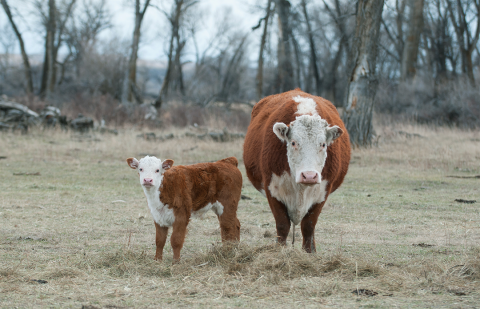Pasture and Forage Minute: Considerations for Feed After Calving, Adding Legumes to Pastures
February 12, 2024
Tips on meeting nutrient requirements of cows after calving season and improving pasture production by frost seeding or interseeding legumes.
Pasture and Forage Minute: Considerations for Pasture Leases and Winter Hay Nutrition
January 30, 2024
Extension educators review factors that affect the success of pasture grazing leases, and how to avoid toxicity and malnutrition through livestock feed during the winter.

Pasture and Forage Minute: Preparing Your Operation for 2024, Planning Spring Annual Forages
January 23, 2024
Winter brings time to take stock of our current operations and plan for the future, which can make a significant impact on success in the upcoming year.
Pasture and Forage Minute: Reflecting on 2023, Improving Pastures in 2024
January 2, 2024
Extension Forage Crop Residue Specialist Daren Redfearn shares his observations on pasture and forage production throughout 2023, and what producers can do to enhance plant growth in 2024.
Pasture and Forage Minute: Tips for Cornstalk Grazing, Using Bad Hay and Silage
December 26, 2023
Considerations for grazing cornstalks with snow cover and utilizing low-quality hay and silage during periods of low supply and high feed costs.
Pasture and Forage Minute: Water Costs for Grazing Cattle, Twine in Feed
December 12, 2023
Extension educators share recommendations for calculating the cost of water for cattle grazing on cornstalks, and highlight the risks associated with cattle ingesting twine or net wrap in hay feed.
Pasture and Forage Minute: Considerations for Grazing After Fall Fertilizers, Using Alfalfa as Protein Supplement
December 6, 2023
Extension insights on grazing crop residue following fertilizer applications and using alfalfa as a protein supplement in winter feed.
Pasture and Forage Minute: Considerations for Grazing Corn Residue
November 14, 2023
Extension educators review the impacts of weather on cornstalk quality and the benefits of grazing corn residue for both cattle and crop producers.






